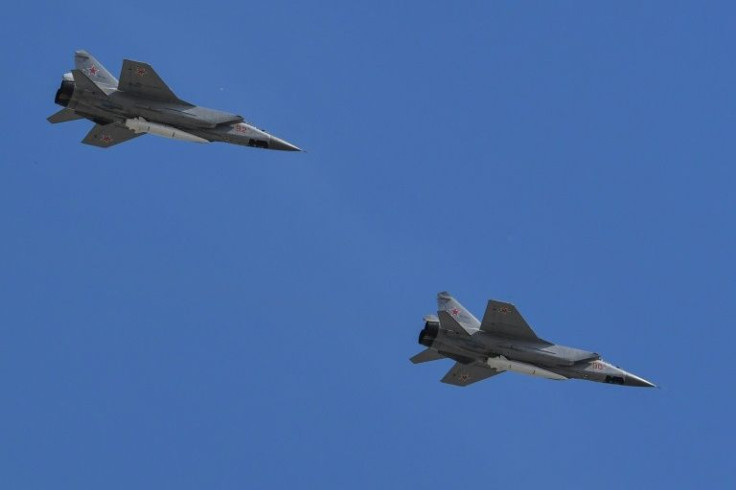'You’ve 25 Seconds': Expert Says Narrow Engagement Window Makes Hypersonic Missiles A Threat
KEY POINTS
- Hypersonic missiles move laterally as well as vertically
- It requires more than one missile to take one out
- The U.S. has reportedly tested a hypersonic missile in mid-March
Two weeks ago, Russia declared that it used the hypersonic missile Kinzhal in Ukraine to destroy an arms depot. Kremlin's claim was that it was the first use of the next-generation weapon, capable of flying five to 25 times the speed of sound, since the start of the war in Ukraine. If true, it would also be the first time a hypersonic missile was ever used in combat.
Amid debates on whether Russia did use it or not - Pentagon believes it had all been hype - there is no doubt about its ability and lethality. According to the former Chief of Pacific Command’s Intelligence Operations Carl Schuster, the extremely narrow time window available to defenders to intercept hypersonic missiles makes it a threatening weapon.
"Hypersonic missiles are more difficult to engage because they can move laterally as well as vertically, so you require more than one missile to take one out," Schuster told The Diplomat during a podcast.
“You have to time your engagement to get it before it enters the dive and the pull-up. You have to catch it while it's in stable flight," Schuster added, referring to points in the missile’s trajectory.
"You’ve got about a 25-second window,” he said. “If you shoot too late, the missile won’t catch up. If you shoot too early, the (hypersonic) missile maneuvers, and once again you miss,” he said, adding that if a hypersonic missile's guidance system is working properly, it should be able to hit within 15 to 25 meters of its target.
The former director of Operations at the Joint Intelligence Center Pacific said Russia might have used a hypersonic cruise missile that is powered by a rocket in Ukraine, which are slower.
He also described China’s anti-ship ballistic DF-21 missile. Schuster said it releases a warhead that performs a series of "step-ladder type maneuvers" after it has reentered the atmosphere on its way to zeroing in on its target. "China has been pursuing them aggressively,” Schuster said.
His comments come as China reported last November that it has developed next-generation hypersonic weapons with technical breakthroughs in infrared homing technology – which the US military may not have until 2025.
Russia and India are also jointly developing BrahMos-II, a hypersonic cruise missile currently under joint development by India's Defence Research and Development Organisation and Russia's NPO Mashinostroyenia. The missile is now scheduled to achieve initial operational capability between 2025 and 2028.
Meanwhile, the U.S. has claimed that it successfully tested a hypersonic missile in mid-March but kept it quiet for two weeks to avoid escalating tensions with Russia. Reports said the Hypersonic Air-breathing Weapon Concept (HAWC) was launched from a B-52 bomber off the west coast.

© Copyright IBTimes 2024. All rights reserved.











